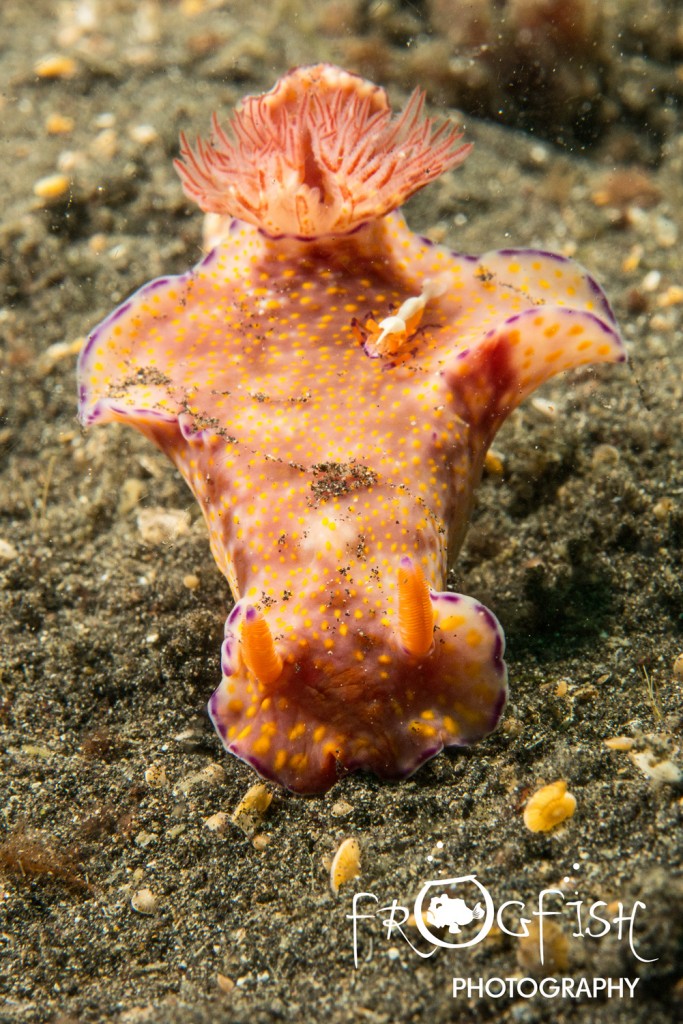Photo / Video News & Reviews
Underwater Photographers call for an end to harassment of marine life
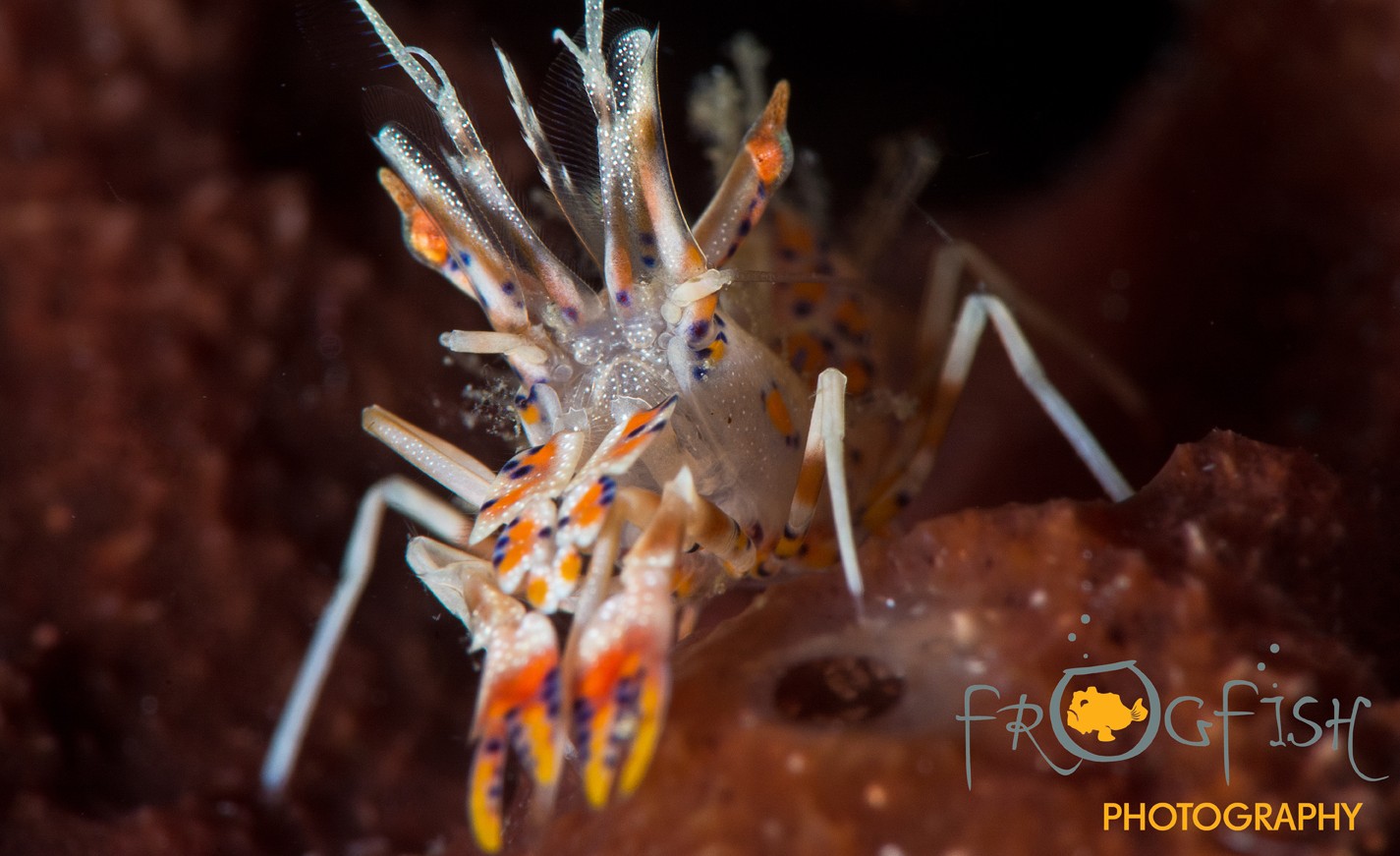
If you are an underwater photographer, and like to spend a bit of time on social media sites, then you may have seen plenty of comments about various competitions and the images that have done well in them recently. Many competition rules will state that any image that has been taken at the expense of marine life will be disqualified, but how do the judges and organisers prove that the marine life in the shot has been moved, harassed or manipulated? At the moment, the status quo seems to be that if they cannot prove it, then the image will be allowed. However, this sets a terrible example to other divers and underwater photographers and only encourages the practise of moving, usually macro critters, to more photographically pleasing places or poses.
Many may say “What is the problem?” it is only a shrimp, it was unlikely to have been hurt, there are more important things in life to worry about, all photographers do it.
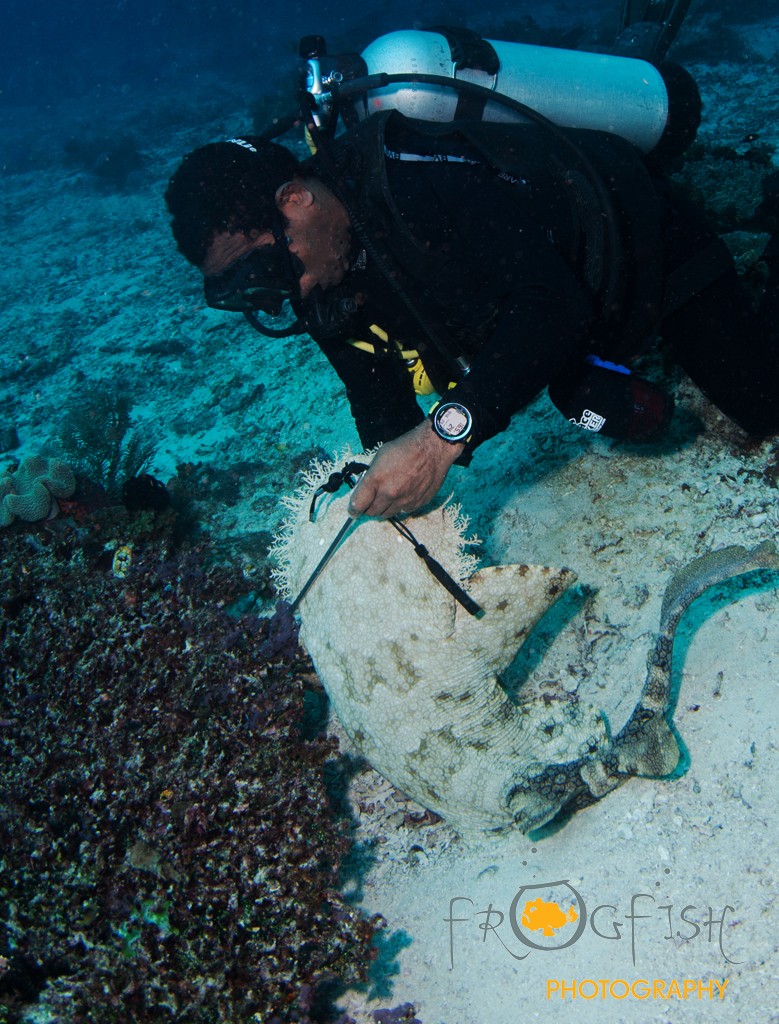
A dive guide moves a wobbegong shark for a better shot for the underwater photographers in his group
All photographers do not do it! As underwater photographers, we should care about the marine environment. It is our responsibility to show the great beauty we see beneath the waves in an honest and truthful way. The argument that there are more important issues going on in the world is just fatuous. Of course there are, but if we used this as reasoning for ignoring the smaller issues, then we belittle everything we do to protect marine life. Caring about the environment, marine life and how this is portrayed in the public domain is important to us.
What can we do? Well, competition organisers and judges can simply change their rules to say that any image suspected of any marine life fiddling will be disqualified. No proof needed. Yes, some people will have perfectly valid images disqualified, but soon would learn not to bother entering such images. For example, it is possible to come across an inflated pufferfish in the wild (it could have been recently licked by a dolphin!), but I would not enter the image into a competition, because I could not prove that it was not me that stressed the fish out. It is possible to find emperor or tiger shrimps in pleasing positions, riding nudibranchs and sea cucumbers for example, but the likelihood of some of these poses happening naturally fits into the same category as that fact that I might win the lottery. It can happen (please let it) but it is phenomenally unlikely. Maybe I should point out at this point that I have a Masters degree in animal behaviour, and so whilst this does not make me an expert in all marine species, it does give me some credibility to comment on such things.
These images should be removed by the organisers and judges, before the serious work of selecting a winner even begins. Underwater photographers can show that they care about these issues by not entering the competitions that fail at following this simple ethos, and complaining and demanding answers about this topic when they feel high environmental standards have not been met.
What can you do? Work with dive centres that do not reward this behaviour in their dive guides. The dive guides, usually in the Far East in our experience, do this because they know that a “good” image of a macro critter will get them a good tip. When we are travelling, we like to dive with centres that do not allow the guides to be tipped individually. Rather, they collect tips, and distribute them evenly among all the staff (those that fill tanks, man the shop, drive the boats etc.) One of our favourite dive centres in Indonesia will fire any member of staff that accepts a private tip and all divers are made aware of this at the beginning of their stay. At other centres, if we are taking a group, we will ask all the divers to tip at the beginning of the week. We give this envelope, with an excellent tip inside, to the centre manager and tell them that they can give it to the staff at the end of the week if no-one reports any dive guides moving critters while we are diving. If the guides are reported to have moved any marine life – the tip money goes to a marine charity instead. This has worked very well indeed!
To find out what support this movement has, Dr Alex Tattersall has setup a petition. It calls for a “cultural shift” that is “necessary at all levels” from “those with influence such as competition organisers and dive magazines” and that they “should promote more responsible UW photo behaviour”.
You can sign the petition here.
There are signatures and supporting comments from around the world. Dive Centres and guides have now also been included in the petition.
The reality is that everyone needs to get involved and try to ensure marine life of all shapes and sizes are well looked after. It must a collective movement by divers, underwater photographers, dive centre owners, dive guides, marine conservation charities, dive publications and competition officials.
Underwater Photographers have the ability to inspire people to protect our oceans. Many post images of amazing scenes, unusual animal behaviours, give us an insight in the world of rarely seen creatures, show us divers enjoying themselves. These images can make up our mind as to where to next travel to, they can be donated to marine charities to use in campaigns, or they can give us tips and ideas on how to next shoot a particular animal. They can also post images to raise awareness and promote conservation that are not pleasant to view, but necessary to share, such as images of dead sharks lying at the bottom of the ocean with their fins removed, plastic pollution, and ghost nets that carrying on killing for years.
We all need to get behind a more ecologically aware way of diving. This is one aspect of a much wider movement. As the new editors of underwater photography at Scubaverse, we will be doing our best to incorporate this ethos in the posts and competitions run on the site.
Blogs
Diver Discovering Whale Skeletons Beneath Ice Judged World’s Best Underwater Photograph
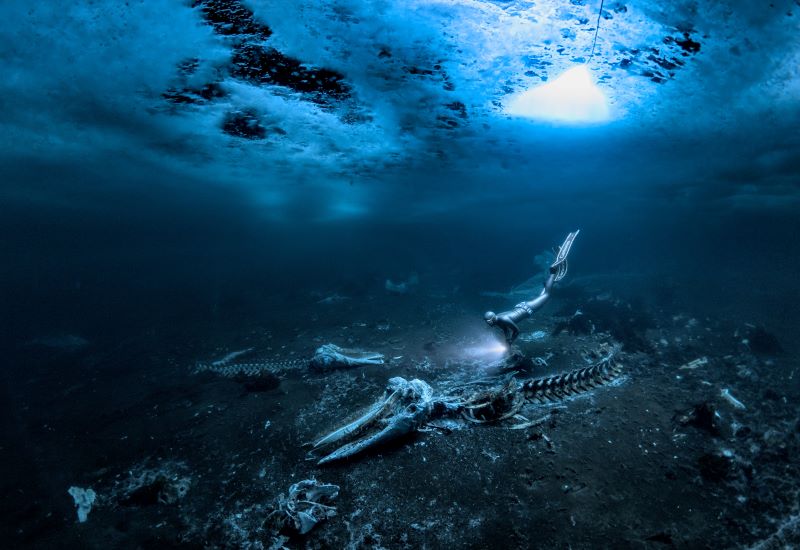
An emotive photograph showing a freediver examining the aftermath of whaling sees
Alex Dawson from Sweden named Underwater Photographer of the Year 2024. Dawson’s
photograph ‘Whale Bones’ triumphed over 6500 underwater pictures entered by underwater
photographers from around the world.
“Whale Bones was photographed in the toughest conditions,” explains chair of judging
panel Alex Mustard, “as a breath-hold diver descends below the Greenland ice sheet to bear
witness to the carcasses. The composition invites us to consider our impact on the great
creatures of this planet. Since the rise of humans, wild animals have declined by 85%. Today,
just 4% of mammals are wildlife, the remaining 96% are humans and our livestock. Our way
needs to change to find a balance with nature.”
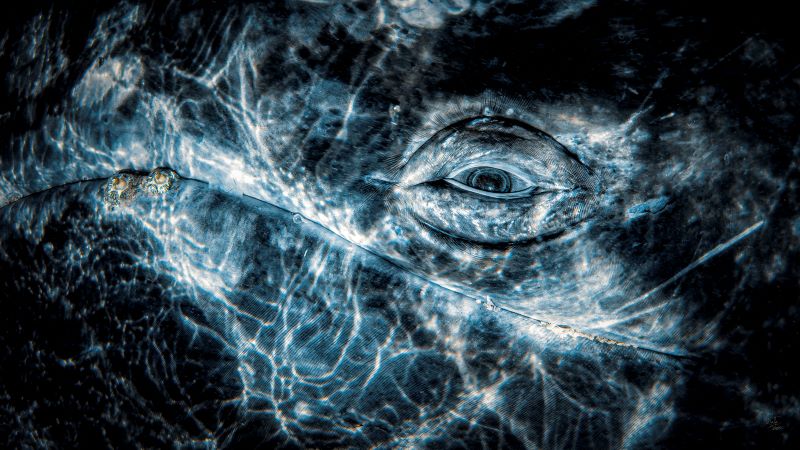
Photo: Rafael
Fernandez Caballero
Whales dominated the winning pictures this year with Spanish photographer Rafael
Fernandez Caballero winning two categories with his revealing photos of these ocean giants:
a close up of a grey whale’s eye and an action shot of a Bryde’s whale engulfing an entire bait
ball, both taken in Magdalena Bay, Baja California, Mexico. Fernandez Caballero took ‘Grey
Whale Connection’ while drifting in a small boat, holding his camera over the side in the water
to photograph the curious whale. ‘The End Of A Baitball’ required Fernandez Caballero to dive
down and be in exactly the right place at the moment the whale lunged. “The photo shows
the high speed attack,” he said, “with the whale engulfing hundreds of kilograms of sardines
in one bite — simply unforgettable to see predation on such a scale.”
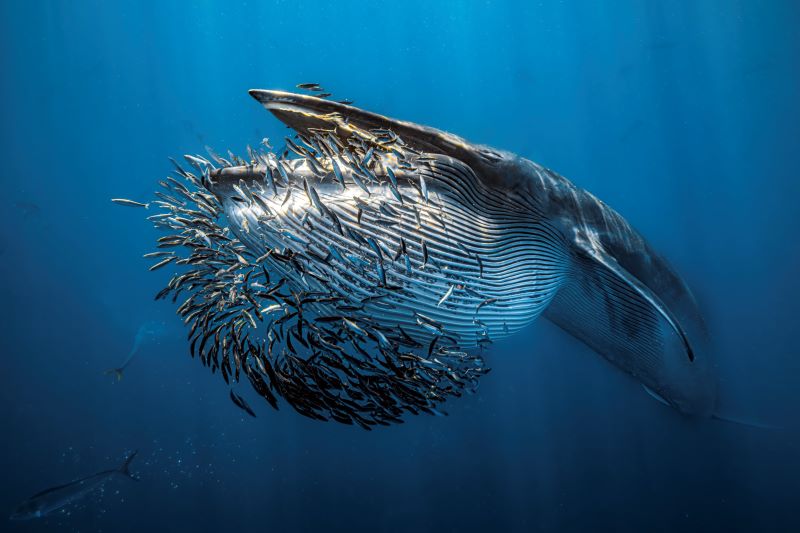
Photo: Rafael
Fernandez Caballero
Lisa Stengel from the United States was named Up & Coming Underwater Photographer of the Year 2024 for her image of a mahi-mahi catching a sardine, in Mexico. Stengel used both a very fast shutter speed and her hearing to catch the moment. “If you listen there’s an enormous amount of sound in the ocean,” she explained. “The action was too fast to see, so I honed in on the sound of the attacks with my camera to capture this special moment.”
“It is such an exciting time in underwater photography because photographers are capturing such amazing new images, by visiting new locations and using the latest cameras,”
commented judge Alex Mustard. “Until this year I’d hardly ever see a photo of a mahi mahi,
now Lisa has photographed one hunting, action that plays out in the blink of an eye.”
The Underwater Photographer of the Year contest is based in the UK, and Jenny Stock,
was named as British Underwater Photographer of the Year 2024 for her image “Star
Attraction”, which finds beauty in species of British wildlife that are often overlooked.
Exploring the west coast of Scotland, Stock explained “in the dark green depths my torch
picked out the vivid colours of a living carpet of thousands of brittle stars, each with a
different pattern. I was happily snapping away, when I spotted this purple sea urchin and I
got really excited.”
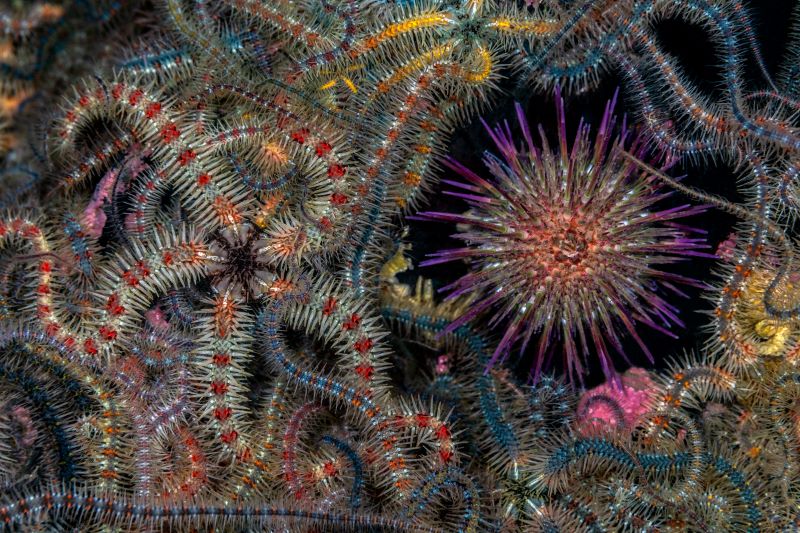
Photo: Jenny Stock
In the same contest, Portuguese photographer, Nuno Sá, was named ‘Save Our Seas
Foundation’ Marine Conservation Photographer of the Year 2024, with his photo ‘Saving
Goliath’, taken in Portugal. Sá’s photo shows beachgoers trying to save a stranded sperm
whale. The picture gives us hope that people do care and want to help the oceans, but also
warns us that bigger changes are needed. “The whale had been struck by a ship and its fate
was sealed,” explains Sá. “An estimated 20,000 whales are killed every year, and many more
injured, after being struck by ships-and few people even realise that it happens.”
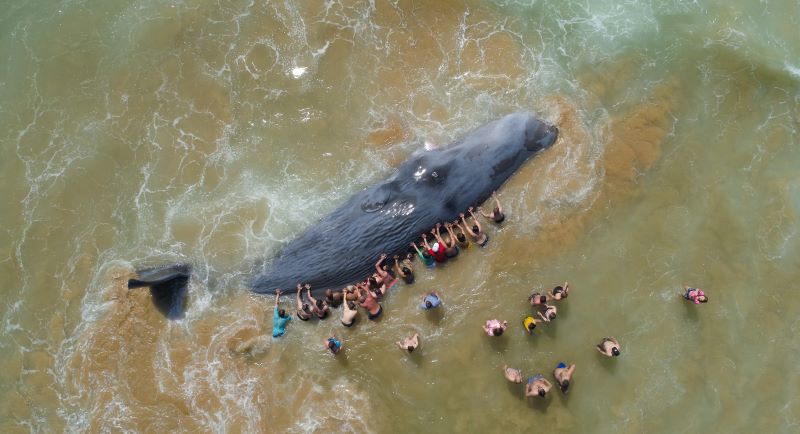
Photo: Nuno Sá
More winning images can be found at www.underwaterphotographeroftheyear.com.
About Underwater Photographer of the Year
Underwater Photographer of the Year is an annual competition, based in the UK, that celebrates photography beneath the surface of the ocean, lakes, rivers and even swimming pools, and attracts entries from all around the world. The contest has 13 categories, testing photographers with themes such as Macro, Wide Angle, Behaviour and Wreck photography, as well as four categories for photos taken specifically in British waters. The winners were announced in an award ceremony in Mayfair, London, hosted by The Crown Estate. This year’s UPY judges were experienced underwater photographers Peter Rowlands, Tobias Friedrich and Dr Alexander Mustard MBE.
Header image: Underwater Photographer of the Year 2024 winner Alex Dawson
News
World’s Best Underwater Photographers Unveil Breathtaking Images at World Shootout 2023
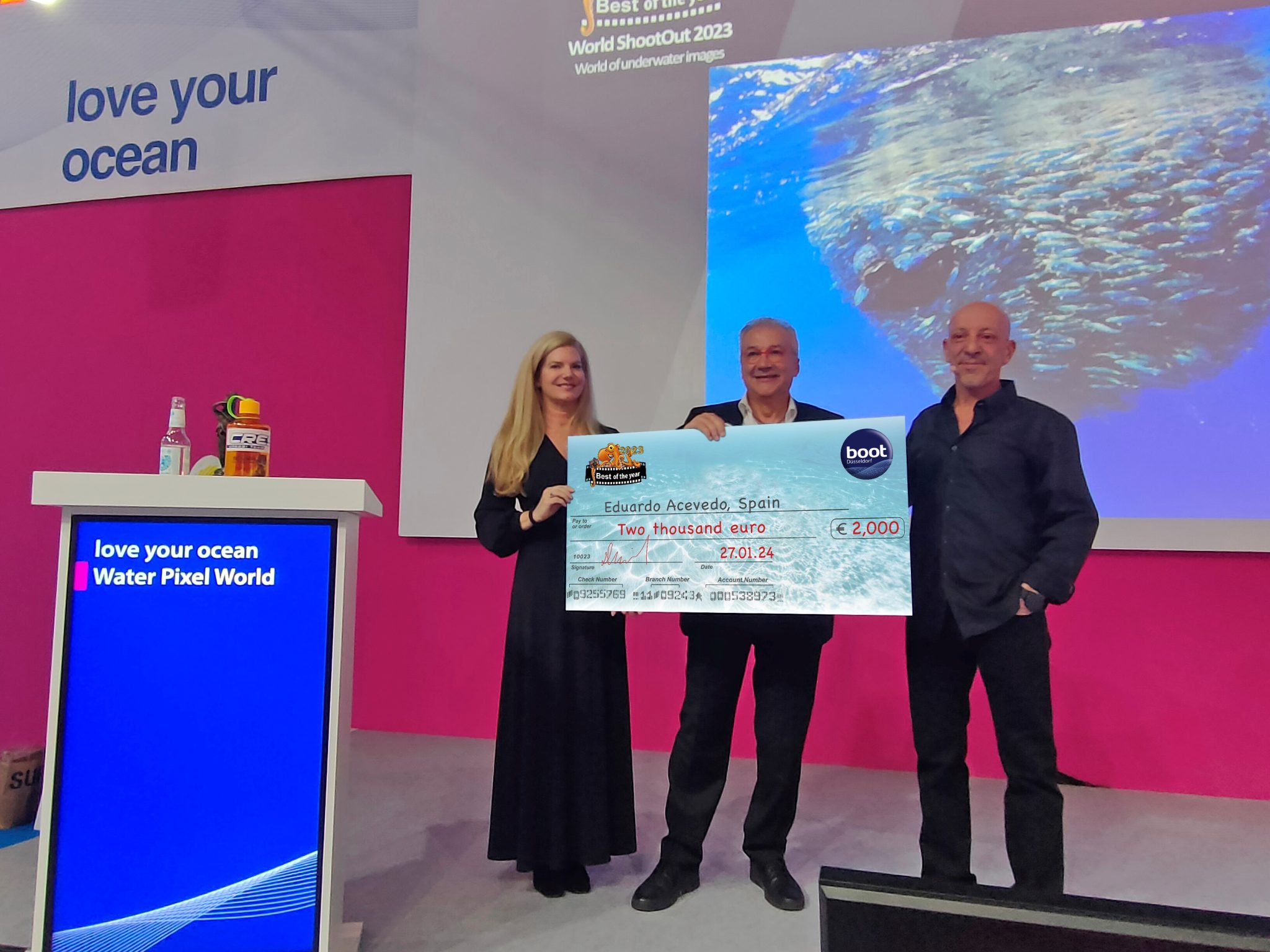
The winners of the prestigious World Shootout 2023 underwater photography competition were announced at this year’s BOOT Show, captivating audiences at the world’s largest diving and water sports exhibition in Dusseldorf, Germany. Hundreds of photographers from 54 countries competed across nine categories, pushing the boundaries of creativity and technical skill.
Grand Prize Winners
- Picture of the Year: Spanish photographer Eduardo Acevedo “secured” the top Honor with the prestigious prize the “boot Dusseldorf Director’s Prize, earning an Andromeda statuette and a €2,000 cash prize.
- Best 5 Images Portfolio: Luc Rooman from Belgium triumphed in this category, winning a dream 4-week diving trip for two to Papua New Guinea, valued at $18,900.
- Amateur Photographer: Alexandra Ceurvorst from the USA impressed the judges with her talent, taking home the 1,000 € cash prize award.
Celebrating Diversity and Innovation
This year’s competition saw 11,680 entries from 964 photographers, showcasing a remarkable spectrum of skills and perspectives. From the intricate wonders of Macro photography to the beauty of “Black Water”, the “Underwater Fashion” category added a touch of artistry and innovation, while the ever-important ” Environmental & Conservation” category served as a powerful reminder of the need to protect these fragile ecosystems.
Looking Ahead: AI and Ocean Conservation
World Shootout founder and producer David Pilosof unveiled an exciting addition for the 2024 competition: this year the Environmental category will be focusing on the impact of plastic on our oceans and future.
This category will embrace the potential of AI or other editing software as a tool to amplify the conservation message.
Entrants will submit campaigns of three original underwater photographs dealing with plastic pollution, along with their final AI assistance processing. This innovative approach encourages artistic expression while raising awareness about a critical environmental issue.
Explore the Stunning Collection
Discover the complete album of competition entries by clicking here.
For Low-resolution photos of finalist entries in eight categories, click here.
-

 News3 months ago
News3 months agoHone your underwater photography skills with Alphamarine Photography at Red Sea Diving Safari in March
-

 News3 months ago
News3 months agoCapturing Critters in Lembeh Underwater Photography Workshop 2024: Event Roundup
-

 Marine Life & Conservation Blogs2 months ago
Marine Life & Conservation Blogs2 months agoCreature Feature: Swell Sharks
-

 Blogs2 months ago
Blogs2 months agoMurex Resorts: Passport to Paradise!
-

 Blogs2 months ago
Blogs2 months agoDiver Discovering Whale Skeletons Beneath Ice Judged World’s Best Underwater Photograph
-

 Gear Reviews3 months ago
Gear Reviews3 months agoGear Review: Oceanic+ Dive Housing for iPhone
-

 Marine Life & Conservation2 months ago
Marine Life & Conservation2 months agoSave the Manatee Club launches brand new webcams at Silver Springs State Park, Florida
-

 News3 months ago
News3 months agoWorld’s Best Underwater Photographers Unveil Breathtaking Images at World Shootout 2023


